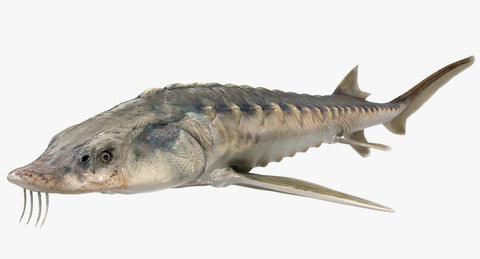Caviar has long been seen as a luxury food. You might find caviar to be extremely expensive if you ever find it at a supermarket. The fact that it is such a high-end product makes it difficult for some to see it in most places.

But what is caviar made of? When you understand what it features, you'll recognize just why caviar costs so much. The detailed nature of the food and the difficulty associated with finding it are parts of why it is caviar so expensive.
From the Sturgeon
The main part to see when asking what is caviar made of involves the specific fish it comes from. The food comes from the eggs or roe of the sturgeon fish. The sturgeon's roe is unique, as not all fish roe is appropriate for people to consume.

The sturgeon is native to the Caspian and Black Seas in Europe and Asia, particularly around Russia. The fish also appears in the Pacific Northwest and the southern Atlantic coast of the United States. The fish is unique for being a saltwater anadromous fish, as it goes from saltwater to freshwater to spawn.
While various fish produce eggs or roe to reproduce, only the sturgeon roe can be considered caviar. Many other types of fish roe are produced and marketed as less expensive forms of caviar, but they are not genuine caviar like what you'd get out of the sturgeon. The only authentic part of what is caviar made of entails how it comes out of the sturgeon.
Caviar is also salt-cured, which means it is preserved with salt. Salt is applied to the caviar in preparation to ensure its texture and flavor.
But there is some controversy over what is caviar made of. Part of this entails how fishers gather the roe. The female sturgeon has to be captured when she is mature or at least ten years of age. She must also be ready to migrate to lay her eggs. The sturgeon will be caught and then cut open to remove the eggs. The caviar must be clean to prevent it from spoiling, while the rest of the fish is sold as meat.
It would be tough to capture the eggs after the female releases them, thus making the process a necessity. Also, the eggs would be worthless if they were fertilized or ovulated.
What Makes It Cost So Much
You can expect to spend at least $50 for one ounce or 30 grams of caviar. But why is caviar so expensive?
Naturally, the concept of what is caviar made of is a consideration. The elaborate process needed to gather the roe makes it tough to collect, thus causing caviar to be relatively rare.

But the critical part of why is caviar so expensive comes from how difficult it can be to harvest roe legally. There are many restrictions out there that are keeping people from being able to openly fish for sturgeon and harvest their roe. The sturgeon population has been negatively impacted by commercial fishing over the years. The concern led to the Convention on International Trade in Endangered Species imposing quotas on what people can gather in the 1990s. The convention went further in 2006 by recommending a ban on commercial fishing for sturgeon in the Caspian Sea. The restrictions have made it harder for people to legally fish for sturgeon and harvest caviar, thus causing the value to increase.
Caviar will cost more if its form is harder to find. Caviar from the beluga sturgeon will cost $1,000 or more per ounce. But it is illegal to import beluga caviar to the United States, so you'd have to travel to Russia or another place where it naturally appears to enjoy the product. The beluga sturgeon is only in parts of Russia, and its population has been dwindling, thus causing its value to become astronomical.
One other part for why is caviar so expensive comes from how people market it as a status symbol. Caviar has been a high-end good since the days of Soviet Russia. Companies often promote the product as something that makes a person feel as though one is a part of royalty or the upper-class. The feeling comes from the product being hard to find.
The explanation for how caviar is produced gives a good rationale for why is caviar so expensive. The challenging effort necessary for harvesting caviar entails both hard physical work and plenty of legal red tape.
